Definition |
Standard numbers or codes published on an item that cannot be accommodated in another field such as fields 020, 022, 027, etc. Use the assigned 1st indicator to specify an International Standard Code (ISRC), Universal Product Code (UPC), International Standard Music Number (ISMN), International Article Number (EAN), or Serial Item and Contribution Identifier (SICI). Use 1st indicator 7 in conjunction with subfield ǂ2 for other standard identifiers. Prefer use of the specific 1st indicators 0-4 instead of 1st indicator 7 and the corresponding Standard Identifier Source Code in subfield ǂ2. Use 1st indicator 8 only in cases where there is neither an appropriate specific 1st indicator nor a MARC Standard Identifier Source Code assigned to that standard identifier. |
1st Indicator |
Type of standard number or code. The type of standard code in the field. |
| |
| 0 |
International Standard Recording Code (ISRC). The ISRC usually appears on an item preceded by the letters ISRC. It consists of 12 alphanumeric characters structured as the following four elements separated by hyphens on the item:
- Country code, from ISO 3166, Codes for the Representation of Names of Countries
- First owner of recording, consisting of three alphanumeric characters
- Year of recording code, consisting of the last two digits of the year (e.g., 82 for 1982)
- Recording code, consisting of five digits, assigned sequentially by the first owner
Do not enter the initials ISRC or the hyphens between numbers. Use 1st indicator value 0.
| 024 |
0 |
|
NLC018413261 |
|
| [Appears on item as ISRC NL-C01-84-13261] |
|
|
| |
| 1 |
Universal Product Code (UPC). The UPC appears as a barcode symbol with 12 digits printed below it. Hyphens or spaces usually separate the elements of the number on the item. The code has three basic parts:
- First digit, the Number System Character (NSC) which appears on the left side of the symbol outside of the bars
- Second through eleventh digits, encoded in the symbol below the bars
- Twelfth digit, a check digit usually appearing at the bottom right of the symbol
The three basic parts of the UPC may be differently configured depending upon the kind of resource with which it is associated.
- For audio and video products, the ten digits of part 2, printed below the parallel bars, consist of three elements: a five-digit code that designates the manufacturer assigned by the Uniform Code Council; a five-digit selection number; and a single digit configuration number. The fifth digit of the first element serves as both the last digit of the manufacturer designation and the first digit of the selection number. The tenth digit (configuration number) indicates the format of the product.
- For serials, the five digits after the NSC identify the publisher or distributor. The next five digits encode a BIPAD title identification number that uniquely identifies each publication. A two-character supplemental symbol designating a specific issue may follow the number.
- For paperback books, there are two bar-coding structures. In one barcode structure, the ten digits of part 2 may consist of a five-digit identifier for the publisher. The next five digits contain the title portion of the ISBN.
- For the other barcode structure, the first five digits of part 2 identify the publisher or the bookline, the next five digits represent a cover price or price category. Five add-on digits may follow part 3. They are derived from the title portion of the ISBN.
Do not enter the initials UPC, hyphens, or spaces.
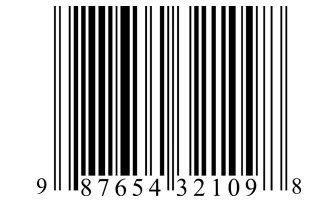
| 024 |
1 |
|
027011003509 ǂd 03862 |
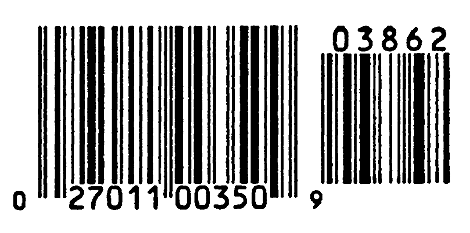
|
|
| |
| 2 |
International Standard Music Number (ISMN). ISMN is an agency-assigned data element. ISMNs are assigned to music publications by designated agencies in each country participating in the program. An ISMN consists of ten or thirteen digits. The 10-digit ISMN, used before 2008, is comprised of the letter M followed by 8 digits (variable length publisher number plus item number) plus a single character check digit. The check digit applies to the previous 8 digits. The 13-digit ISMN, used since 2008, has the prefix 979 and a 0 to replace the M, then 8 digits plus the final check digit. The check digit applies to the previous 12 digits. A 13 digit ISMN is identical to the EAN-13 number encoded in the bar code. The structure is specified in ISO 10957. An ISMN usually appears on an item preceded by the initialism ISMN and with functional parts separated by a hyphen or space. Do not enter the initials ISMN, hyphens, or spaces.
| 024 |
2 |
|
M345246805 |
| 024 |
2 |
|
9790345246805 |
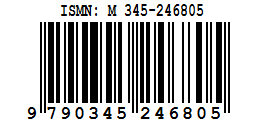
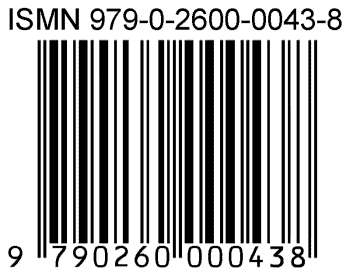
|
|
| |
| 3 |
International Article Number (EAN). The EAN has 13 digits. The first three digits are the EAN Prefix, representing a country or region or a broad class of materials such as serials or paperback books. The next nine digits comprise the company prefix and the item number. An all-numeric Modulus-10 check digit is the 13th character of the EAN.
- For serials, a three-digit prefix (977) is used in combination with the eight-digit International Standard Serial Number (ISSN) or with a nationally administered title number such as the BIPAD number in North America. A two- or five-digit add-on symbol to designate issues may be present.
- For paperback books, a three-digit prefix (978) is followed by the first nine characters of the International Standard Book Number (ISBN), omitting the final ISBN check character. A five-digit supplement may be used to code additional data, e.g., price.
Do not enter the initials EAN, hyphens, or spaces.
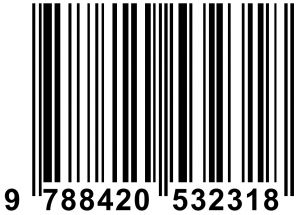
|
|
| |
| 4 |
Serial Item and Contribution Identifier (SICI). The SICI is a variable length code that provides unique identification of serial issues (SICI) and serial contributions (SCI). The SICI consists of the ISSN, issue date, issue numbering, SICI standard version number, and a check character. The SCI adds the contribution location and a title code (if more than one title begins on a page) between the issue numbering and the SICI version number. The SICI version associated with the barcode differs from the strictly eye-readable version of the SICI, so there will often be two SICIs in a single bibliographic record. Enter SICI numbers with punctuation separating the sections of the identifier as found in the number. Do not enter the initials SICI. 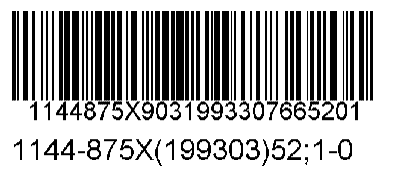
| 024 |
4 |
1 |
1144875X9031993307665201 |
| [Scanned SICI associated with the barcode] |
| 024 |
4 |
1 |
1144-875X(199303)52;1-0 |
| [Eye-readable SICI for the same article] |
|
|
| |
| 7 |
Source specified in subfield ǂ2. The source of the number or code is specified in subfield ǂ2. Prefer use of the specific indicators 0-4 over the corresponding Standard Identifier Source Code in subfield ǂ2. 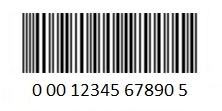
| 024 |
7 |
|
00012345678905 ǂ2 gtin-14 |
|
|
| |
| 8 |
Unspecified type of standard number or code. The type of standard number or code is unspecified. Use 1st indicator 8 only in cases where there is neither an appropriate specific 1st indicator nor a MARC Standard Identifier Source Code assigned to that standard identifier. |
|
2nd Indicator |
Difference indicator. The difference between a scanned number or code and the same number or code in eye-readable form. |
| |
 |
No information provided. No information is provided about the form of the scanned and eye-readable numbers. Use also when the eye-readable number does not appear in a form adequate for scanning. |
|
| |
| 0 |
No difference. The scanned number and the eye-readable version are the same. |
|
| |
| 1 |
Difference. The scanned number and the eye-readable version are different.
| 024 |
4 |
1 |
8756-2324(198603/04)65:21.4QTP;1-E |
| 024 |
4 |
1 |
874623247541986340134QTP1 |
| [Eye-readable (1st) and scanned SICI (2nd) for the same article "Quality: Theory and Practice." AT&T Technical Journal, v. 65, issue 2, (Mar.-Apr. 1986), p. 4. Both the eye-readable and the scanned SICIs appear on the same record.] |
|
|
Subfields |
|
| ǂa Standard number or code |
The standard code or number.
|
| ǂc Terms of availability |
Do not enter any price information. Generally do not enter terms of availability. For scores you may use subfield ǂc to indicate the availability of rental material.
| 024 |
2 |
|
M571100511 ǂc Rental material |
| 024 |
3 |
|
9790008084140 ǂc Rental material |
|
| ǂd Additional codes following the standard code |
Optional digits (e.g., manufacturer's price information). Usually such digits are to the right of the code.
| 024 |
1 |
|
074644098549 ǂd 03 |
| [UPC 074644098549 with optional digits 03 following the code] |
|
| 024 |
1 |
|
027011003509 ǂd 03862 |

|
| ǂq Qualifying information |
A brief statement of qualifying information concerning the item associated with a number being recorded in subfield ǂa or subfield ǂz.
| 024 |
2 |
|
M570406203 ǂq (score ; ǂq sewn) |
| 024 |
2 |
|
M570406210 ǂq (parts ; ǂq sewn) |
|
| ǂz Canceled/invalid standard code |
A canceled or invalid code.
|
| ǂ2 Source of number or code |
Codes for the source of the number or code. Use with 1st indicator value 7. See the Standard Identifier Source Codes. Prefer use of the specific 1st indicators 0-4 instead of 1st indicator 7 and the corresponding Standard Identifier Source Code in subfield ǂ2. For information about subfield ǂ2, see Control Subfields.
| 024 |
7 |
|
0A3200912B4A1057 ǂ2 istc |
| 024 |
7 |
|
10.1007/978-3-030-22176-8 ǂ2 doi |
|
| ǂ6 Linkage |
Data that link fields when non-Latin script is entered. This subfield is system supplied and does not appear in OCLC online displays. Do not manually add subfield ǂ6. For more information about subfield ǂ6, see Control Subfields. |
| ǂ8 Field link and sequence number |
For information about subfield ǂ8, see Control Subfields. |
Punctuation |
In records containing punctuation, enclose data in a single occurrence of subfield ǂq in parentheses. Enclose data in multiple occurrences of subfield ǂq in one set of parentheses and separate individual occurrences of subfield ǂq with a space, semicolon, space. Omit any punctuation from the end of the field unless it ends with an ellipsis, hyphen, closing parenthesis, exclamation point, question mark, or period following an abbreviation.
|
Indexing |
For indexing and searching information, see Searching WorldCat Indexes, field 024. |
MARC 21 |
For more information, including content designator history, see MARC 21 Format for Bibliographic Data, field 024. |







